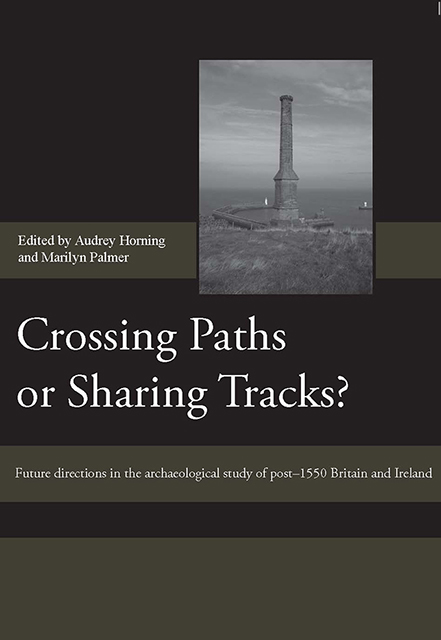 Crossing Paths or Sharing Tracks?
Crossing Paths or Sharing Tracks? Published online by Cambridge University Press: 07 March 2023
The nine papers in this section turn from general consideration of practice and paradigms to specific considerations of analytical approaches, expressed through a number of case studies. All the papers are concerned in one way or another withthe materiality of post-medieval and industrial archaeology, whether demonstrated in artefacts, structures or landscapes, and the way in which that materiality articulates withhuman agency.
English Heritage-based archaeological scientists Justine Bayley, David Dungworth and Sarah Paynter open this section, in chapter 10, with a plea that archaeologists working on post-medieval and industrial sites should make more use of materials science in trying to reconstruct historic industries through the examination of process residues. Focusing upon evidence from the historic glass industry, and using English and Irish case studies, the authors convincingly demonstrate the interpretive potential of scientific analysis, not just by providing technical details of industries but also information about the people who owned them or worked in them. For example, analysis of the residues from the remains of the Silkstone glasshouse in Yorkshire indicates that the glassworkers were quickly aware of and adopted the latest technology in the form of flint glass, thereby indicating the potential for further research on the reasons for such innovation in a comparatively isolated area. Bayley, Dungworth and Paynter therefore contribute further to the debate regarding the relative merits of technocentric and social interpretative frameworks that was discussed in Section One, stressing that industrial sites did not operate in a social vacuum.
This theme is continued by Richard Thomas, in chapter 11, in his consideration of the potential of zooarchaeological analysis in post-medieval and industrial archaeology, demonstrating its value not just for a better understanding of farming practices and diet but also for appreciating the profound changes to the way in which humans thought about and treated animals. Thomas opens with a sobering statistical account of the dearthof faunal analysis on British and Irish post-medieval assemblages, and proceeds to demonstrate the kinds of questions that could be asked and insights gained through highlighting his own work on assemblages that were deemed worthless by the excavators. Thomas's paper pulls no punches, and demands a reply from practitioners.
To save this book to your Kindle, first ensure [email protected] is added to your Approved Personal Document E-mail List under your Personal Document Settings on the Manage Your Content and Devices page of your Amazon account. Then enter the ‘name’ part of your Kindle email address below. Find out more about saving to your Kindle.
Note you can select to save to either the @free.kindle.com or @kindle.com variations. ‘@free.kindle.com’ emails are free but can only be saved to your device when it is connected to wi-fi. ‘@kindle.com’ emails can be delivered even when you are not connected to wi-fi, but note that service fees apply.
Find out more about the Kindle Personal Document Service.
To save content items to your account, please confirm that you agree to abide by our usage policies. If this is the first time you use this feature, you will be asked to authorise Cambridge Core to connect with your account. Find out more about saving content to Dropbox.
To save content items to your account, please confirm that you agree to abide by our usage policies. If this is the first time you use this feature, you will be asked to authorise Cambridge Core to connect with your account. Find out more about saving content to Google Drive.